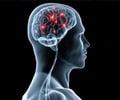Schizophrenia takes an enormous economic and social toll in addition to the distress, dysfunction, disability and mortality for those afflicted with this disease
Schizophrenia takes an enormous economic and social toll in addition to the distress, dysfunction, disability and mortality for those afflicted with this disease and is hence a major health issue worldwide.
Elements of the disease are present from birth, other aspects emerge during developmental years, and the illness becomes fully expressed in early adulthood with long-lasting implications for most patients.Schizophrenia, which is seen as the paradigmatic psychiatric illness, presents different symptoms in multiple domains, whereby positive and negative phenomena can be separated (Falkai et al., 2005): Positive (psychotic) symptoms in a broader sense include delusions or delusional ideation, hallucinations, disturbance of association, catatonic symptoms, agitations as well as feelings of alien influence and suspiciousness. Negative symptoms include restricted range and intensity of emotional expression, limited thought and speech productivity, social withdrawal, and reduced initiation of goal-directed behaviour. These negative components are typically characterised as affective flattening, alogia, diminished drive, anhedonia and avolition. Furthermore, schizophrenia is associated with cognitive impairment, disorganised speech and behaviour, as well as poor attention. The primary advance in pharmacological treatment of schizophrenia was in 1952 with the introduction of dopamine antagonist antipsychotic drugs.
Paradigm shift in schizophrenia research: from single-disease entity to the paradigm of multiple domains
A century of work has been based on designs that conceptualise schizophrenia as a single disease entity, despite recognition that schizophrenia must have scientific status of a syndrome in the absence of proof of a single disease process (Carpenter et al., 1999). The implications are profound. Research based on the presumption that a single disease is present has produced weak findings that frequently fail confirmation in replication studies. The heterogeneity of patients receiving this diagnosis is substantial. Causal and neuropathological findings valid for some patients will not be found in others. Illness manifestations vary substantially between patients, and symptomatic components of illness are only weakly related to each other within individuals.
Efforts in Europe during the mid-20th Century to reduce this heterogeneity by separating ´true´ or nuclear schizophrenia from other psychotic disorders became the international standard with DSM-III (Diagnostic and Statistic Manual of Mental Disorders) in 1979. The criteria for diagnosing schizophrenia had changed radically from the original Kraepelian concept of avolition combined with dissociative pathology (Kraepelin, 1896). This was replaced by reality distortion pathology with hallucinations and delusions being prominent.
Rather than a more homogeneous disease entity being defined by nuclear schizophrenia, a syndrome with substantial heterogeneity was found. Separate domains of pathology have been defined, each with its own life history and only loosely linked with the other domains (Carpenter, 2004). First six, then three domains were viewed as critical: positive psychotic symptoms, negative symptoms, and pathology observed in the interpersonal context. A paradigm shift was proposed, moving the focus of aetiological, pathophysiological and therapeutic study away from schizophrenia as a disease entity onto specific domains of pathology (Strauss et al., 1974). This indicated a shift in schizophrenia research away from the syndrome level toward study designs that aimed to identify more homogenous entities (Carpenter et al., 1999).
Advertisement
In recent years, schizophrenia research has progressed in two major directions:
Advertisement
- First, it was determined if a disease entity within the schizophrenia syndrome could be identified. The presence or absence of negative symptoms in persons with the diagnosis of schizophrenia was ascertained and two subgroups were contrasted. The term ´deficit schizophrenia´ was introduced to refer to negative symptoms that are direct manifestations of schizophrenia, not negative symptom ratings that can occur for a variety of reasons in people with schizophrenia but are not caused by schizophrenia itself. The group with primary negative symptoms, the ´deficit schizophrenia´ subgroup, represented about 25% of the cases. Deficit and non-deficit subgroups could be distinguished with regard to clinical manifestations, cognitive impairment, therapeutic response, neuropathology, and aetiological risk factors. Thus, ´deficit schizophrenia´ appears to be a disease entity distinguished from other forms of schizophrenia (Kirkpatrick et al., 2001; Arango et al., 2004).
- Second, the focus was put on the domains of pathology in their own right, rather than as a method for identifying a subgroup. This work has been most influential in the evaluation of drug therapies. Drugs approved for the treatment of schizophrenia have shown efficacy for psychosis per se, but not for critical aspects which determine long-term morbidity: here we find impaired cognition and negative symptoms highly associated with poor functional outcomes. Impaired cognition, with an estimated reduction in IQ of 5 points, starts relatively early in life and is probably in place by the time people begin to manifest psychosis. The aetiology and treatment of cognitive and negative symptoms of schizophrenia must be considered as individual domains separate from psychosis. Since these two pathology domains are not addressed by current anti-schizophrenia drugs, new mechanisms of drug action appear to be required (Arango et al., 2004).
- One clinical implication will be addressed as the 5th edition of the Diagnostic and Statistical Manual of Mental Disorders (DSM-V) is developed. In addition to diagnostic categories at the syndrome level, domains of pathology will be addressed as essential to the evaluation of individuals and to identifying pathology domains to be addressed therapeutically. A parallel system of diagnostic categories and psychopathological dimensions will shift attention to each individual's specific areas of dysfunction without losing the value of syndrome categories.
- Regulatory agencies will accept domains of pathology as potential indications for drug therapy. Consensus on clinical trial designs – necessary to establish efficacy for impaired cognition or negative symptoms in schizophrenia – has been established, at least for the US Food and Drug Administration (FDA). This shifts drugs discovery in schizophrenia from producing dopamine antagonists for psychosis to novel discoveries for other key domains (apart from dopamine antagonism).
- Drugs with efficacy in impaired cognition and negative symptoms may have application across a number of disease classes. As these pathologies are observed prior to psychosis, it will raise the possibility of very early intervention and secondary prevention (Carpenter & Koenig, 2008).
- Furthermore, this shift in paradigm will influence virtually every aspect of schizophrenia research. Genetic studies, for example, will shift from the genetics of schizophrenia as a syndrome to the genetics of pathological domains. This may help clarify the apparent genetic overlap between major illness syndromes. It may be that persons with depression and psychosis share genetic vulnerability for depression with persons who have depression without psychosis. Similarly, mood disordered patients with psychosis may share vulnerability genes for psychosis with persons with schizophrenia. Finally, pathophysiology of cognitive impairment is likely to be shared among impaired individuals in several syndromes rather than being unique to each.
Rather than being a homogeneous disease entity, schizophrenia is characterised by separate domains of pathology, which are only loosely linked with each other.
The loss of precious human experiences and the association with poor long-term functional outcome justifies a focused and dedicated effort to discover the causes and treatments of the ´deficit syndrome´ as a distinctive feature of schizophrenia.
In future schizophrenia research, the focus of therapeutic study will move away from schizophrenia as a disease entity onto specific domains of pathology, promoting the development of targeted drug therapies. To understand genetic causation, genetic studies will shift from the genetics of schizophrenia as a syndrome to the genetics of pathological domains.
As a consequence, drugs discovery in schizophrenia redeploys interests from producing dopamine antagonists for psychosis to novel discoveries targeting with new molecular targets and therapeutic profile.
As certain schizophrenia pathologies such as impaired cognition and negative symptoms are observed prior to psychosis, drugs with efficacy in these domains will raise the possibility of very early intervention and secondary prevention. This may substantially improve the quality of life for patients in the near future, and prepare the field to address recovery, cure and prevention.
Source-Eurekalert
RAS









